As I discussed yesterday, Barack Obama is explicitly rejecting the current political Thesis, and its AntiThesis.
Many voters intuit this, and much of his support comes from people who are too young to think of current political assumptions as being anything but a burden.
This leads me to consider our past political crises and ask whether anyone has ever gotten away with this, explicitly rejecting the past in gaining election to the Presidency.
As you will see the odds are stacked against Obama.
1968 — Our current political assumptions, which I have
dubbed the Nixon Thesis of Conflict, emerged after the 1968 election.
The man who set those assumptions, Richard M. Nixon, was based in the
old Eisenhower AntiThesis. Eisenhower had leaned against the New Deal,
sought to moderate it, and Nixon was his Vice President. Nixon’s
nomination as Vice President in 1952 was made to draw McCarthyites —
rabid anti-communists who supported Joe McCarthy — into Eisenhower’s
orbit. (Remember that some McCarthyites, like Pat McCarran of Nevada,
were Democrats.) The new Thesis was created in order to merge Nixon’s
own 43% of the 1968 vote with the 15% of George Wallace.
1932 — The Roosevelt Thesis of Unity, dubbed by Nixonites as
the Big
Government Thesis of the New Deal, emerged after the 1932
election. Franklin D. Roosevelt, however, came from the old Wilson
AntiThesis. Woodrow Wilson had leaned against Theodore Roosevelt’s
progressivism and gained power as a neo-Populist, winning a three-way
race in 1912 but failing in winning power for a successor, as James M. Cox lost.
Cox’s Vice Presidential nominee, of course, was Roosevelt.
The New Deal Coalition was created after-the-fact. It was an act of creative will by a man who understood his time, who understood the new media of movies and radio, and who understood Myth and Values as the proper province of government leadership. But the man who crafted those Myths and Values had a long history in politics to call on, a very long history. Most especially, he had the story of a distant relative to call on.
1896 — The Republican alliance of Progressives and regulars
was set by Theodore Roosevelt, who wasn’t even on the ballot in 1896.
But Roosevelt was the dominant figure of William McKinley’s time in
office, as police commissioner, as self-styled hero in the
Spanish-American War, and as New York Governor. Regulars put him on the
1900 ballot to get rid of him. He succeeded, once in office, in
grafting the Progressive impulse to Main Street and Wall Street
Republicanism, creating the Big Tent party which dominated life until
the Great Depression.
So, can we argue that BO is TR, only with a better suit? One
could make that argument. But it’s important to note that TR’s own
political Thesis was explicitly, deeply felt, and widely understood
before McKinley’s assassination. The idea of a rugged America, loving
the outdoors, and caring about the byproducts of mass industry was
what the 1890s were all about building. TR’s life and story
exemplified his time, and gave his fellow citizens the feeling that
they were like that, too. For Obama to have any hope of victory, his biography must be equally strong and in tune with our times.
1860 — The Civil War defines our present two party system,
and the positions of Abraham Lincoln before the Republican Party’s
founding should be instructive. Fact is, Lincoln began his political
career in the early 1840s, and assuming this is his 1843 portrait, you
will see that he was a studied product of the Clay AntiThesis. He was,
in short, a Whig.
The Lincoln Thesis of Union was thrust on its author by events.
Lincoln explicitly preached Union both in the run-up to the War and
throughout the war itself. He renamed his party the Union Party in
running for re-election in 1864, believing that to make the war
explicitly about slavery risked losing to the Democrats, who had
nominated Civil War "hero" General George McClellan.
But back to the Whigs. The Whigs were the party of wealth, of
business, and of "civil improvement." They supported canals and, after
that scam faded, they supported railroads. They explicitly rejected the
politics of place for the politics of class, and Democrats found them
pretty easy to beat for just that reason — most Americans at that time
were dirt poor, land the only hope of advancement.
Take a look at this portrait of Lincoln’s party leader, Henry Clay.
Notice the wrap-around tie. It was always a part of Clay’s look, which
was urbane and educated. This is what Lincoln is aping in that old
portrait. That is his political heritage. In short, Lincoln was far
more like FDR and Nixon than he was like TR, created by his time but a
man in many ways from another time.
1828 — So what about Andrew Jackson, then? Jackson created
the Democratic Party to break the cycle of primogeniture which had made
the Presidency the property of the prior Secretary of State for a full
generation. Madison was Jefferson’s SoS, Monroe’s was Madison’s SoS,
and John Quincy Adams, the son of the man victimized by Jefferson in
1800, had been Monroe’s SoS.
Jackson’s first run was lost in the U.S. House,
where supporters of Adams and Henry Clay combined to give Adams the
victory, although Jackson had actually won. And it was the sting of
that stolen election that really created the Democratic Party
organization. Jackson created his own Myth and his own Values in order
to create legitimate power for his party, and he systematically carried
out a highly-partisan program after his election.
Of all these characters from our history, I’ve concluded that Obama
is most like Jackson (stolen election leading to party-building,
nothing before that), with tinges of Theodore Roosevelt (an image
created during the struggle, a futurist symbol tied to a much older
party structure).
The power of Obama, as I’ve said before, lies in his rejection of
our recent history. Instead of embracing the passion against the stolen
election, as Howard Dean, the Netroots, and (to an extent) John Edwards
have, Obama glides serenely above it all, declining to be drawn as highly
partisan, hopeful of Republican support for a new coalition based on
consensus.
It’s a lovely dream. It’s a TR myth grafted on to Old Hickory’s party. Thus the title of this piece, Young Hickory of Illinois.


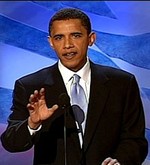
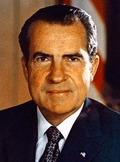
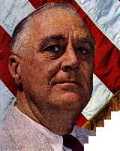
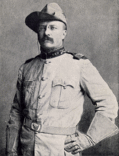
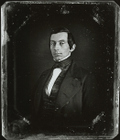
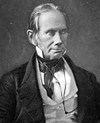
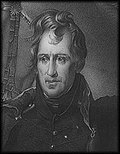








Young Hickory Of Illinois